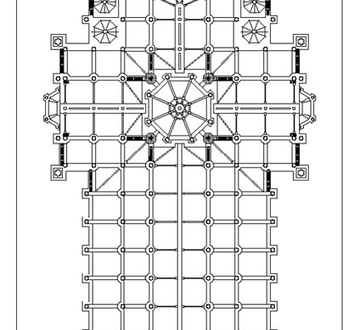Duomo di Milano (Milan Cathedral)
Piazza del Duomo 20121 Milano
Restoration of the Apse 1990/1995
The apse of the cathedral showed some minor issues relating to a continuous although modest lead unsealing eastward. Moreover, the large upper falconature (summit decorations) were cracked in the area of contact with the chains, and all the marble surface was particularly affected especially in the most exposed portions such as sculptures and ornaments. The sealings were totally compromised, allowing water infiltrations that washed away the layers of the mortar beds of the blocks and corroded the connecting iron bars. The window frames and the iron reinforcing of the glass connections were heavily damaged and no longer able to support the numerous antelli (portions of the glass walls). The marble surface, deteriorated by urban pollution and by the mechanical actions caused by temperature variations and frost effects, showed fragile and unstable parts. The central window had suffered severe damages during the Second World War, and the first recovery procedures were hastily carried out. The first intervention consolidated the two buttresses with connections from the capital to the base partially affecting the two adjacent portions of masonry and with metal bars injected with reoplastic mortars.
By Benigno Morlin Visconti




















